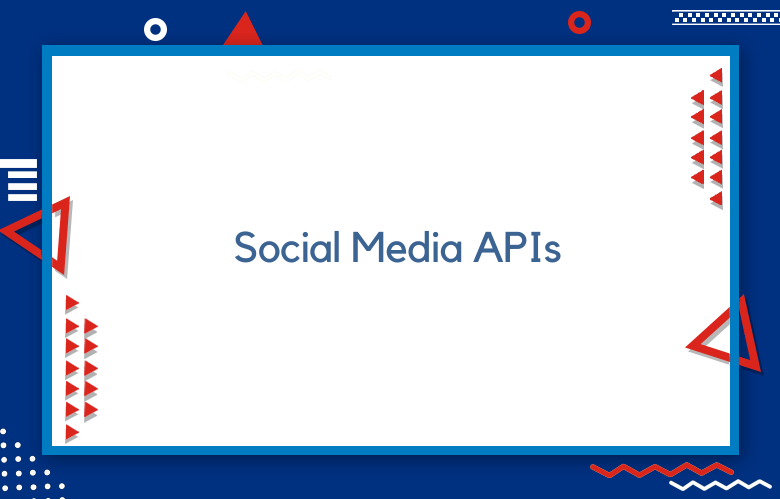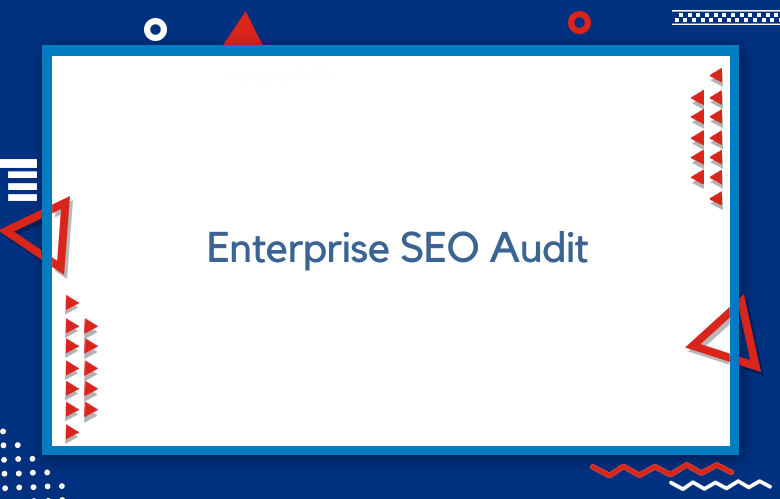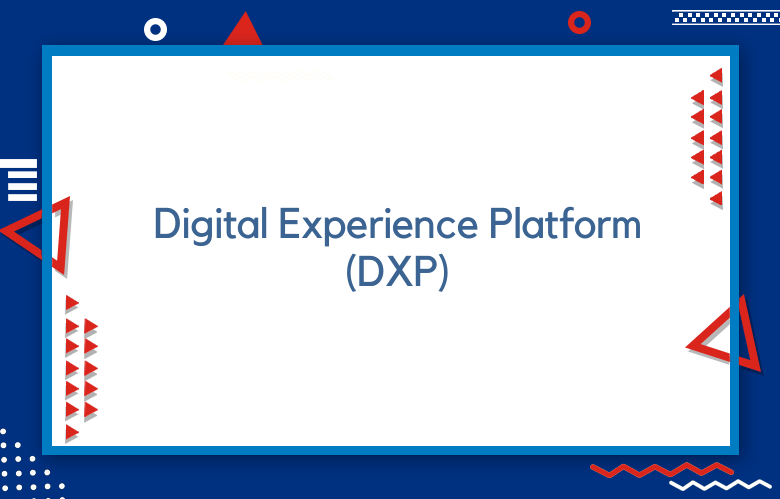Social Media APIs: Benefits and Challenges

Undoubtedly, social media has become an integral part of our lives. We use it to stay connected with friends and family, follow influencers, and keep up with current trends. But did you know businesses can use this powerful platform through social media APIs? We will explore what social media APIs are and how they can benefit businesses.
Marketers and developers are increasingly using APIs (Application Programming Interfaces) to access social media data.
Programming Interface is a set of protocols or tools for building software applications. APIs allow two applications to communicate, enabling developers to add features to programs quickly and easily.
Social media APIs allow developers to access social media data to improve their applications. Let’s examine the benefits and challenges of using social media APIs.
Types of Social Media APIs
Numerous social media APIs range from basic data retrieval to more advanced analytics.
Social media APIs enable developers to access and interact with content from popular platforms such as Twitter, Facebook, Instagram, Google+, Tumblr, and YouTube.
The most common type of social media API is the Data Retrieval API.
This type of API enables developers to access data associated with a specific user or post, including likes, shares, comments, and other related information.
For example, the Twitter API allows developers to request a list of tweets by a specific user or search terms.
Another type of social media API is the Analytics API. This type of API enables developers to gain insights into how their content is performing across various social networks and measure the effectiveness of their campaigns in real time.
Popular analytics APIs include the Facebook Insights API, which provides data about traffic sources and audience demographics;
The Twitter Search API offers insights into Twitter trends and conversations, and the Instagram Insights API gives detailed metrics on total reach and impressions for particular posts or campaigns.
Public APIs
Public APIs (Application Programming Interfaces) allow developers to access data from other software applications.
They enable developers to create new applications in a standardized way. By utilizing public APIs, developers can save time and effort by reusing existing code rather than starting from scratch.
Public APIs provide a wide range of functions, such as allowing users to connect with third-party services, search for specific information, or retrieve content from the web in an organized manner.
As technology advances and the need for more data increases, the use of public APIs has grown exponentially over the last few years.
For example, companies like Facebook, Twitter, Google Maps, and YouTube have publicly available APIs that enable developers to integrate their services into mobile apps or websites.
Furthermore, some public APIs are also used by financial institutions to protect consumer data and increase security around online transactions.
With the growing need for higher-quality data sources, public APIs will continue to be essential to modern web and mobile app development.
Private APIs
Private APIs are application programming interfaces (APIs) developed specifically for internal use within an organization.
These APIs are not publicly accessible and provide internal company data and operations access.
Private APIs typically enable organizations to create custom software applications that can connect directly with their existing systems.
They may also create highly customized user experiences, allowing companies to tailor their products and services for specific customer segments or other strategic reasons.
Private APIs offer several advantages over open-source alternatives, including increased security, greater scalability, and improved performance.
Private APIs can reduce development costs by reusing existing code and leveraging existing investments in IT infrastructure.
The downside to private APIs is that they are less flexible than open-source alternatives since they must be maintained by the organization rather than relying on the community for updates or bug fixes.
However, as long as organizations have robust authentication, authorization, and data access control policies, private APIs can offer a viable solution for many applications.
Social Media APIs
Social media APIs are tools that allow developers and users to access various services within their social networks.
They provide a platform for users to interact with, engage with, and share content across social media websites.
Developers can use these APIs to create applications that manipulate data from various social media sites or even integrate two or more of them at once.
The most popular social media APIs are Facebook Graph API, Twitter REST API, Instagram Basic Display API, LinkedIn V2 API, and YouTube Data API.
Each offers robust features and functions for developing apps around them.
For example, Facebook Graph API provides tools for creating custom user experiences on the site, like friend suggestions, profile page editing, and location sharing.
At the same time, Twitter REST API offers access to user timelines, followers lists, and tools for sending tweets and direct messages.
Facebook API
The Facebook API is a set of programming tools and application program interfaces (APIs) designed to allow developers to access and integrate Facebook’s social media functions with their applications.
It will enable developers to query data, post new stories, manage ads, upload photos, and perform many other tasks.
The API is available in various versions, each offering different levels of access and functionality. For example, the Graph API provides read/write access to the social graph and limited search capabilities.
The Ads API provides access to creating and managing advertising campaigns directly from applications or websites.
The Marketing API allows businesses to build custom audiences for targeted marketing campaigns. With these APIs, companies can use the powerful reach of Facebook’s vast user base for their marketing strategies.
Twitter API
The Twitter API (Application Programming Interface) is a robust set of tools that allows developers to access, analyze, and manipulate data from the popular platform.
With the API, developers can create sophisticated applications that can interact with any aspect of Twitter, such as tweets, timelines, direct messages, search queries, profile information, etc.
The API also provides various real-time data streaming services for tracking topics and hashtags across the platform.
Moreover, it helps developers process large volumes of data quickly and efficiently, enabling them to deliver personalized user experiences in real time.
Furthermore, the API constantly evolves with new features added to better support developers in building innovative applications on the platform.
Instagram API
The Instagram API platform is designed to provide developers with programmatic access to the core Instagram functionalities. It enables developers to create applications and experiences with Instagram content and services.
It allows for direct communication between users and third-party applications and programmatic access to information about users, media objects, comments, tags, likes, and other platform features.
This provides many possibilities for content creators and app developers alike.
The Instagram API provides a wide range of features, such as fetching user data and media objects, customizing interactions between your app and its users;
Creating engaging experiences using live video streaming, enabling search features across the platform, accessing insights about user activity, and generating full-fidelity photos from profile pics.
It also allows for secure authentication between apps, thanks to its OAuth2 support.
LinkedIn API
The LinkedIn API is an application interface that enables developers to access the professional social network’s data and build tools and applications using this data.
This API provides programmatic access to various features, including user profiles, messages, connections, jobs, endorsements, recommendations, and more.
With this API, users can create custom applications that can be used for different purposes, such as recruiting talent, researching competitors, or keeping up-to-date with the latest industry trends.
One of the key advantages of the LinkedIn API is its rich semantic capabilities.
This allows developers to perform searches based on criteria such as location or skillset, which results in more accurate search results.
Moreover, the API also provides sentiment analysis, enabling users to identify sentiment patterns to gain insights on specific topics or industries.
It also supports natural language processing capabilities that allow developers to extract meaningful information from text data.
YouTube API
The YouTube API is a powerful tool that allows developers to embed YouTube videos, access YouTube data, and interact with other YouTube features.
It will enable developers to create applications to search for and retrieve videos, list video categories and channels, or upload videos directly to YouTube.
The API supports the interactive playback of embedded videos and access to user-generated content on the platform.
Through the API, developers can also integrate user authentication mechanisms such as OAuth2 authentication to secure data access within their applications.
The API offers a host of analytics capabilities so that users can gain insights into how different viewers use their applications. With its increased functionality and robust feature set, the
YouTube API provides developers with an effective way to integrate their project’s content onto the world’s largest video-sharing platform.
How can Social Media APIs be used to improve My Business?
Social media APIs can improve businesses in many ways. For instance, they can help enterprises better connect with their target audience and build relationships by increasing engagement and visibility.
By leveraging social media APIs, companies can access demographic data, such as age and gender, which can be used to customize content for more tailored campaigns.
Social media APIs provide businesses with insights into how people interact with their content and brand messaging, allowing them to make data-based decisions on how best to adjust content and marketing strategies to maximize reach.
Furthermore, they enable companies to automate tasks like scheduling posts from multiple accounts at once or monitoring relevant hashtags across platforms, thus freeing up time for businesses to focus on other high-priority tasks that require more human attention.
Overall, social media APIs are indispensable tools for companies that want to succeed by leveraging the power of digital marketing.
What are the Security Considerations When using Social Media APIs?
When using social media APIs, there are several security considerations to consider.
Data privacy is a significant concern; when fetching user data with an API, it’s essential to ensure that all users have explicit permission to use and store their data.
In addition, the APIs should also feature secure authentication protocols and encryption technologies like HTTPS to prevent unauthorized access.
Another security consideration is access control; the API should provide detailed roles and permissions based on accessed data.
Proper logging should be implemented to promptly identify suspicious activity or breaches, and appropriate actions should be taken swiftly.
These measures ensure user information remains secure when leveraging social media APIs for applications.
What are the Everyday Use Cases for Social Media APIs?
Social media APIs can be used in various everyday contexts for businesses and individuals. Companies often use them to engage with customers, promote their products, and expand their reach.
Individuals can use them to monitor industry trends, stay up-to-date with news, and even track their stats, such as followers or likes.
Social media APIs also allow people to easily find new contacts by searching for topics and interests related to their business or field of interest.
They are also used to create custom apps and web services that interact with popular social networks like Twitter, Facebook, Instagram, and more.
Social media APIs provide developers access to standardized content formats for easy integration into existing systems.
In short, these APIs enable quick and secure communication between people and companies worldwide.
What types of Data can be accessed using Social Media APIs?
User data: This includes information such as a user’s name, profile picture, age, gender, interests, and location.
Post data: This includes the text content of a post and any accompanying images or videos.
Comment data: This includes the text content of comments and the user data of the person who commented.
Like data includes information on which users have liked a post or comment.
Share data includes information on which users have shared a post or comment.
Follow data includes information on which users a particular user is following.
Message data: This includes the text content of private messages between users.
Group data includes information on users’ memberships in groups and the posts and comments made within those groups.
Page data includes information on pages that a user has liked or followed.
Social media APIs can access various data, including profile information, posts, photos, and videos.
Profile information that can be accessed using social media APIs includes a user’s name, profile picture, bio, and contact information.
Posts that can be accessed using social media APIs include the text of the base, the date and time it was posted, and any comments or likes associated with the post.
Photos that can be accessed using social media APIs include the image’s URL, the date and time it was posted, and any comments or likes associated with the photo.
Videos accessed using social media APIs include the video’s URL, the date and time it was posted, and any associated comments or likes.
Social media APIs can also be used to access a user’s friends list and any groups or pages they are a member of.
Social media APIs can also be used to access a user’s activity feed, which includes information on what they have been doing recently.
Social media APIs can also be used to access a user’s notifications, including information on new posts from friends or groups they are members of.
Social media APIs can also be used to access a user’s messages, including private messages and messages from group chats.
Social media APIs can also be used to access a user’s settings, which include information on privacy settings and account preferences.
What are the Advantages and Disadvantages of using Social Media APIs?
Advantages
One of the primary advantages of using social media APIs is that they allow developers to access a wealth of data that can be used to create new and innovative applications.
Social media APIs can be used to gather insights into user behavior, which can improve the user experience.
Another advantage of social media APIs is that they can be used to create more personalized experiences for users.
Disadvantages
One of the primary disadvantages of using social media APIs is that they can be used to collect sensitive information about users without their knowledge or consent.
Social media APIs can also be used to spread false or misleading information.
Another disadvantage of social media APIs is that they can be used to create artificial viral content, which can mislead users and distort the public perception of an issue or event.
Social Media API Development?
Social media APIs enable developers to integrate social network features into their applications, websites, and products.
These APIs offer a range of parts, including user profile information, messages, posts, comments, analytics data, and more.
Users can use these APIs to interact with content from social networks such as Facebook, Twitter, and LinkedIn.
With these APIs, users can create and manage their profiles on various social networks, which allows them to access information about their friends and colleagues.
They can also post content to all of their connected networks simultaneously.
They can also use the API to analyze how people use the platform or what reactions they get from specific posts or topics.
Furthermore, by tracking hashtags or keywords, they can use the API to gain insight into what content is trending across social networks.
Social Media API Security?
Social media API security is increasingly important as social networks and online applications grow.
APIs allow developers to access data from social media networks, but this access comes with a risk of malicious activity.
Attackers can use APIs to gain unauthorized access to user data and launch attacks against vulnerable websites and applications.
To mitigate these risks, social media networks must take steps to ensure their APIs are secure and properly authenticated.
API authentication should include solid digital signatures and encryption measures, such as OAuth 2.0 or OpenID
Connect to protect users’ data from unauthorized access. In addition, developers should use secure protocols like TLS/SSL when integrating with social media APIs to prevent man-in-the-middle attacks.
Further security measures include rate-limiting requests to block brute force attacks and implementing two-factor authentication for account login protection.
What are the benefits of using Social Media APIs?
Increased Engagement
One of the primary benefits of using social media APIs is that they can increase engagement with your content.
By making it easy for people to share your content on their social media accounts, you can reach a larger audience and encourage more people to interact with your brand.
More Traffic to Your Website
Another benefit of using social media APIs is that they can help to drive more traffic to your website.
People who share your content on their social media accounts effectively promote your website to their friends and followers.
This leads to more people visiting your site, which leads to more sales or leads.
Improved Search Engine Rankings
In addition to driving more traffic to your site, using social media APIs can also help to improve your search engine rankings.
This is because when people share links to your website on their social media accounts, it creates backlinks to your site.
Backlinks are essential in determining search engine rankings, so the more backlinks you have, the higher your site will rank in search results pages.
More Significant Insights into Your Audience
Another benefit of using social media APIs is that they can give you more significant insights into your audience.
By tracking how people interact with your content on social media, you can learn more about what type of content they like and what kind of messaging resonates with them.
This information can improve your marketing efforts and make them more effective.
More Effective Marketing Campaigns
As a result of the insights gained from using social media APIs, you can create more effective marketing campaigns that are better targeted to your audience.
By tailoring your campaigns specifically for the people most likely to engage with them, you can achieve a higher success rate and get better results for your business.
Increased Brand Awareness
Using social media APIs can also increase brand awareness for your business.
People sharing links to your website or content on their social media accounts help expose your brand to a broader audience.
This increased exposure can lead to more people becoming familiar with your brand and what you offer, ultimately leading to more sales or leads.
Improved Customer Relationships
Another benefit of using social media APIs is that they help you build better relationships with customers and prospects.
By engaging with people on social media and responding to their comments or questions, you can show that you care about them and their experience with your brand.
This improved customer service can lead to increased customer loyalty and repeat business.
Greater Social Media Reach
In addition to increasing engagement and driving traffic to your website, using social media APIs can also help you expand your reach on social media platforms.
When you make it easy for people to share your content on their accounts, you increase the chances that even more people will see it.
Challenges of using Social Media APIs:
Lack of Standardization
One of the challenges of using social media APIs is the need for more standardization.
Each social media platform has its API that developers must use to access data. This can make it difficult for developers to build applications that work with multiple social media platforms.
Rate Limits
Another challenge of using social media APIs is rate limits. Most social media platforms limit the number of requests that can be made to their API per hour.
This can make it difficult for developers to build applications requiring large amounts of data from social media platforms.
Authentication
Authentication is another challenge of using social media APIs. Most social media platforms require developers to authenticate their applications before they can access data from the API.
This can add a layer of complexity to development and make it more time-consuming.
Data Formatting
Data formatting is another challenge of using social media APIs. Social media data is often returned in a format that is challenging to work with, such as JSON or XML.
This can make it difficult for developers to parse and use the data in their applications.
Documentation
Documentation is another challenge of using social media APIs. Social media platforms often need better documentation, making it difficult for developers to understand how to use the API.
This can lead to frustration and wasted time during development.
Change Logs
Change logs are another challenge of using social media APIs. Social media platforms often change their APIs without notice, which can break applications built on top of them.
This can be a major headache for developers and cause them to lose users if their application stops working.
Support
Support is another challenge of using social media APIs. Most social media platforms do not offer support for their API, which can leave developers stranded if they run into problems.
This can be a significant issue for developers trying to build mission-critical applications.
Security
Security is another challenge when using social media APIs. Social media platforms often need to have adequate security measures in place to protect user data.
This can lead to serious privacy issues and put users at risk.
Privacy
Privacy is another challenge when using social media APIs. Social media platforms often collect a lot of user data, which can be used for marketing or other purposes.
This can cause users to be worried about sharing their personal information without consent.
Cost
Cost is another challenge when using social media APIs. Some social media platforms charge developers for access to their API, which can increase the development cost.
This can be a barrier for small businesses or startups trying to build applications on a tight budget.
Conclusion
Social media APIs offer many benefits to businesses. With these APIs, companies can integrate social features into their platforms and applications, allowing them to access valuable customer data, track customer engagement with their brand across channels, and gain insight into new markets.
Social media APIs also enable businesses to effectively target customers through content-rich ads and campaigns tailored to individual users’ interests.
Using social media APIs enables companies to better understand which content resonates best with customers, enabling more efficient marketing strategies.
However, there are some challenges associated with using social media APIs. These include the security risks of granting third-party access to user data and the potential for malicious activity or API abuse by malicious actors.
Managing multiple versions of an API can be complicated and time-consuming as it requires frequent updates and monitoring for potential problems.
Since many social media APIs are free or offer limited functionality to non-paying users, companies must weigh their benefits against the cost of upgrading to a premium version to take full advantage of all available features.
Call: +91 9848321284
Email: [email protected]



